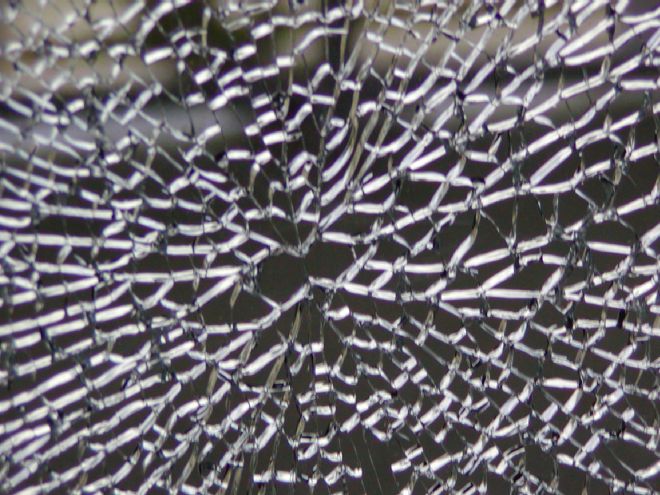
Note: The following article and information was in large part made possible by a recent visit to ECS Automotive. The time spent with Dave Walden and Charlie Vahey was invaluable to understanding the background on original logos that were used by Ford, and ordering correct reproduction glass. The information contained here is shared with anyone who wants to better understand these details.
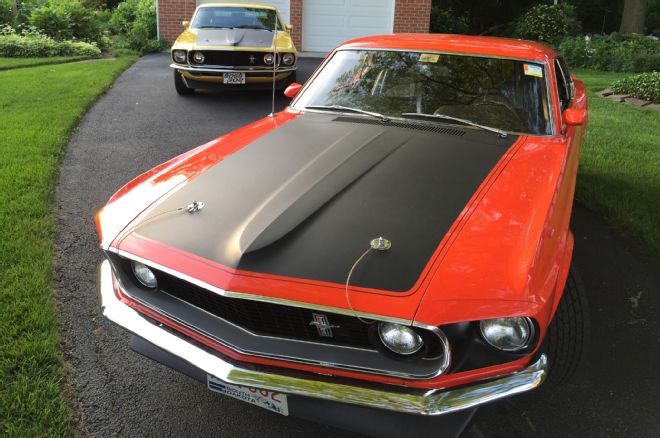
Background
It wasn’t long after cars were made that they started using glass to protect drivers from wind, gravel, and dirt. The early “wind screens” or “wind shields” were nothing more than regular glass used in houses put together as a foldable horizontal piece of plate glass. If, and when, the glass became too dirty to see out of, you would simply fold it down and keep on driving. However as much as this helped with early drivers, it created a serious problem when debris came in contact with the glass or during an accident, as the glass would shatter, flying into the car. Or people would go headfirst through the window with the obvious injuries to follow.
Laminated Glass
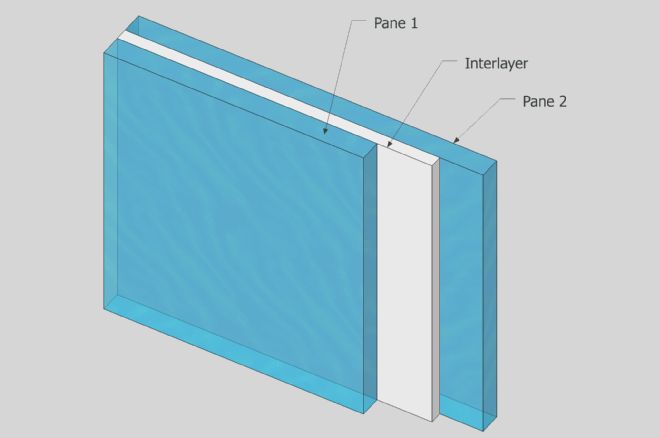 Here is a cross section of laminated glass, showing the plastic layer in the middle.
Here is a cross section of laminated glass, showing the plastic layer in the middle.
In 1903, French chemist Edouard Benedictus stumbled upon the secret to shatter-resistant glass when he dropped a glass flask filled with a dried collodion film. He found that the glass coated with the film cracked, but kept its original shape. This was the key to developing laminated glass, but this process wouldn't be implemented in automobiles until the 1920s. The early manufacturers of glass included Libby-Owens, Du Pont de Nemours (aka DuPont), and Pittsburgh Plate Glass (aka PPG). It wasn’t until 1928, when Libby-Owens became the first company to produce automotive laminated safety glass, won the contract to supply Ford with windshields for the Model A. It is rumored that Henry Ford and his close friends were involved in an accident where flying glass proved detrimental, and because of this experience Ford was determined to improve the safety of windshield glass, but at an affordable price.
Tempered Glass
In addition to laminated glass, automakers began to use tempered glass in the late 1930s. This became popular, in a large part, as the design of cars changed from a more open design to a closed sedan style. This type of glass became standard in the vehicle’s side and back windows and gains its strength through a heating and rapid cooling process that strengthens the glass’ outer surface as well as its core. Tempered glass is about four times stronger than ordinary glass, and unlike ordinary glass, tempered glass fractures into small, relatively harmless pieces. The opening photo to this story shows what happens to tempered glass when it breaks. As an interesting development, auto manufacturers today have started using laminated glass on the side and rear windows to help protect in case of a roll over, help reduce break-ins, and make it quieter. The trend right now is to use more laminated glass.
Decoding the Glass
All Mustangs, including the Boss and Shelby models, had glass that was date-coded and included specific information on what type of glass was being used. CarLite was the most common source, with the only known exception being Corning that we see being used in convertible back window glass. A breakdown of the codes on the glass is as follows:
CarLite: Ford’s main supplier of OEM glass. Corning was the other supplier in rare cases.
Super 30: Most likely refers to the thickness of the plastic (PVB—Polyvinyl Butyral) between the layers of glass of the windshield, which is .030 in thickness.
Date Codes: Written in a year/month format. The examples shown here are January 1969, January1967, and December 1967.
D or N: Refers to the plants in which the glass was made. D=Dearborn, and N=Nashville. Nashville is the most common logo that we see on glass being produced during these years.
Safety Glass: Refers to both laminated and tempered glass.
Laminated: Two layers of glass with a plastic film material between them.
Tempered: Heat-treated glass designed to break into small pieces.
Solid: Single piece of glass with no layers. Refers to all glass except the windshield.
Sun-X: Glass that is tinted (green). Non-tinted glass simply has nothing mentioned and the same space is left blank.
R: Registered Trademark.
AS1 or AS2: American National Standards Institute for glass. AS-1 for windshields, and AS-2 for tempered glass.
Sunvisor: When the top part of the windshield is shaded. The shading is in the plastic film.
Temp-R-Plate: Etching applied to rear glass only. This reference was used until about 1968.
FM: Ford Motor Company codes for glass indicates if glass is tinted or not. Examples of this would be a tinted windshield is M57 where M55 is clear. On doors and quarters, we usually see M61 and M31 for tinted, M60 and M30 for clear.
The Etching Process
The etching of original glass could have been done either on the inside or outside of the glass, and this seems to vary over time and for different pieces of glass. In addition, the etching could appear reverse as well. It appears that this was random and changed so there is no correct side or orientation for the etching. Any type of glass that is not etched (and used ink) is later service replacement glass.
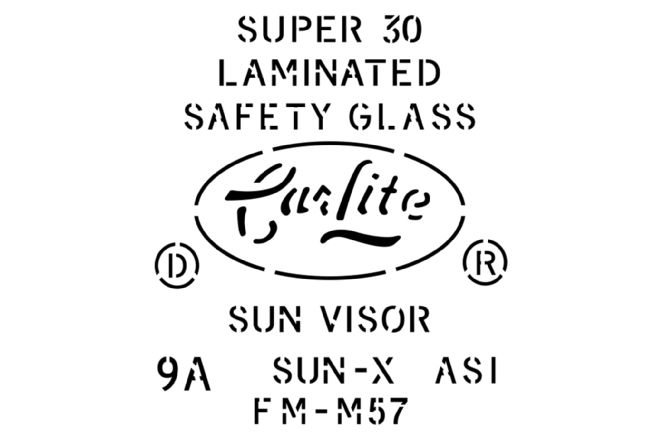 January 1969 windshield etching
January 1969 windshield etching
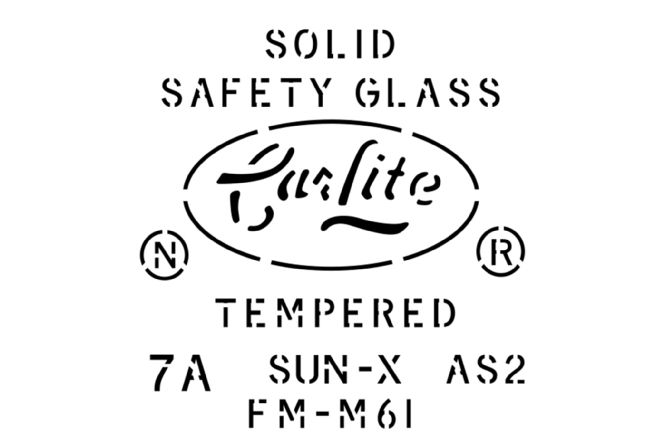 January 1967 side glass etching
January 1967 side glass etching
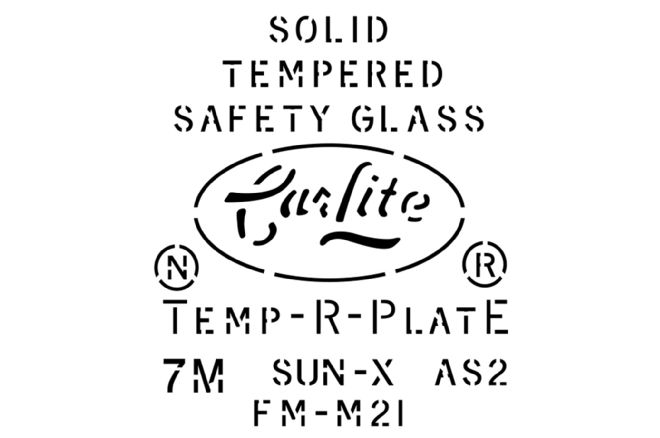 December 1967 rear glass etching
December 1967 rear glass etching
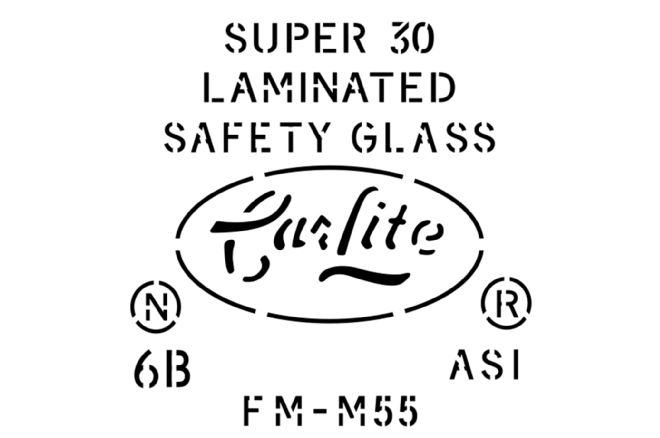 February 1966 windshield etching
February 1966 windshield etching
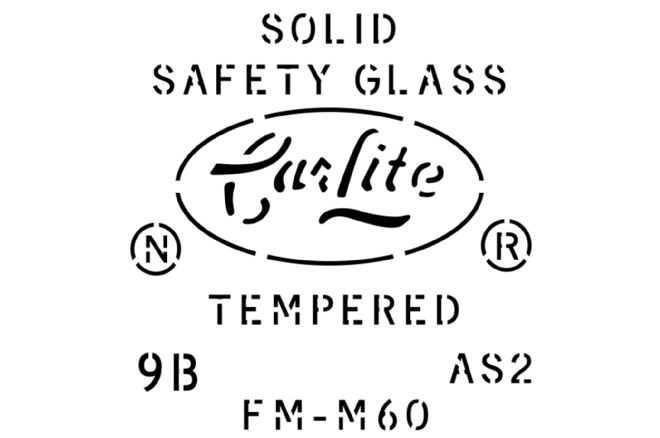 February 1969 side glass etching
February 1969 side glass etching
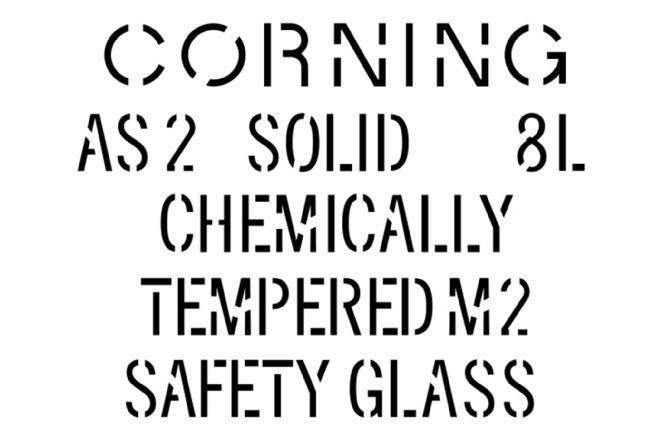 November 1968 convertible rear glass etching
November 1968 convertible rear glass etching
Tinted Versus Non-Tinted Glass
The tinted glass that Ford used in the 1960s and 1970s is not the same type of tinted windows people see and use today, since its not that obvious. The non-tinted glass was clear and the tinted glass (called Sun-X) had a green tint to the glass. It is sometimes hard to see the difference once installed unless the glass pieces are laid out side by side with a neutral background.
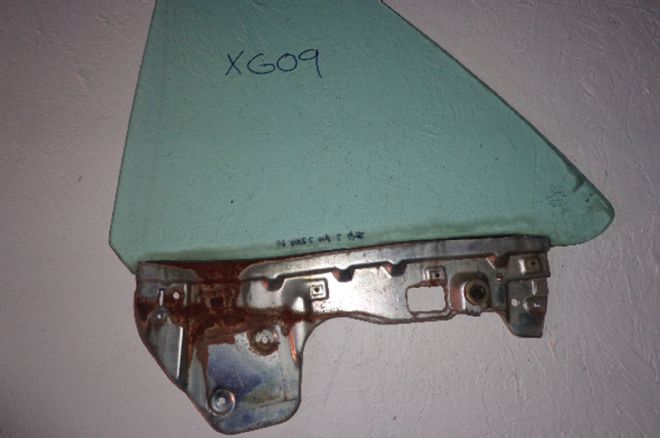 Original Sun-X tinted glass
Original Sun-X tinted glass
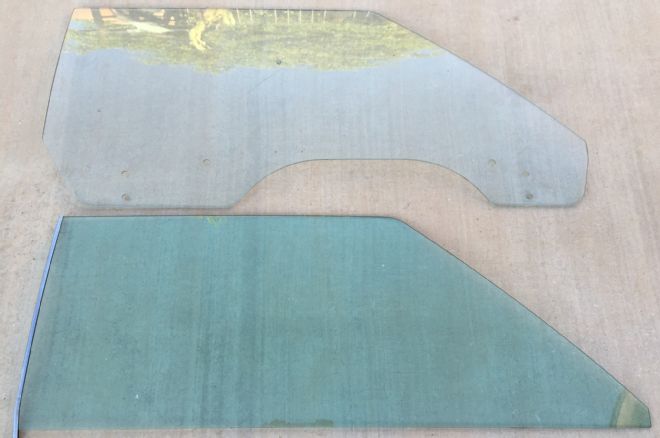
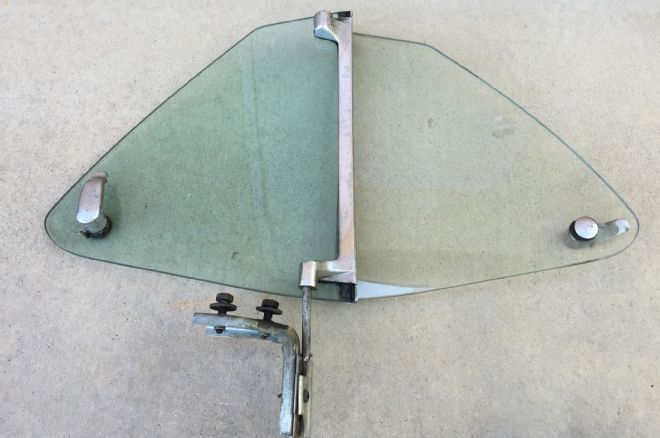
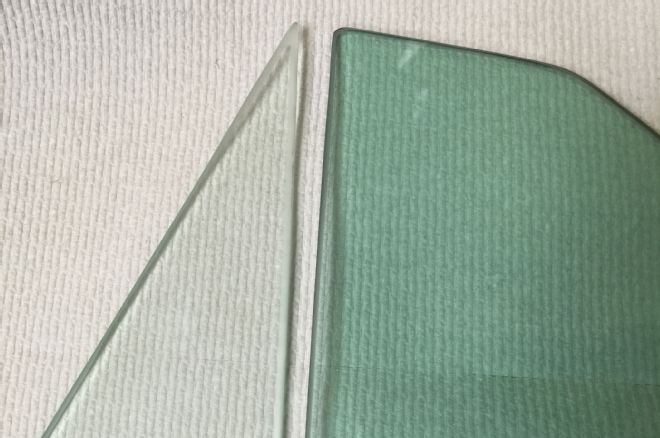 Tinted Sun-X glass compared to clear glass
Tinted Sun-X glass compared to clear glass
N.O.S. Glass
CarLite N.O.S. original glass is always a great find if/when available. Here are some photos for reference. The blue stickers/labels indicate the clear glass and the green stickers/labels indicate the tinted or Sun-X glass.
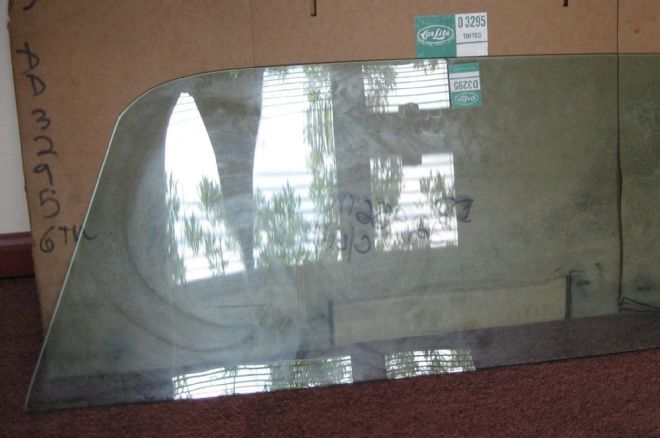 N.O.S. 1965/1966 Mustang door glass
N.O.S. 1965/1966 Mustang door glass
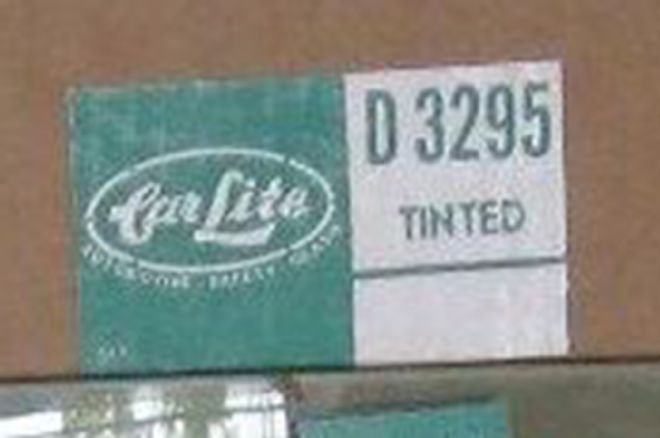 1965/1966 original CarLite sticker on N.O.S. glass
1965/1966 original CarLite sticker on N.O.S. glass
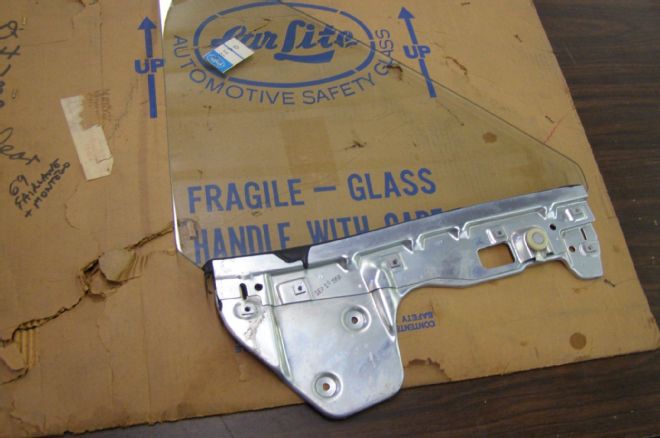 N.O.S. 1969 Fairlane side glass
N.O.S. 1969 Fairlane side glass
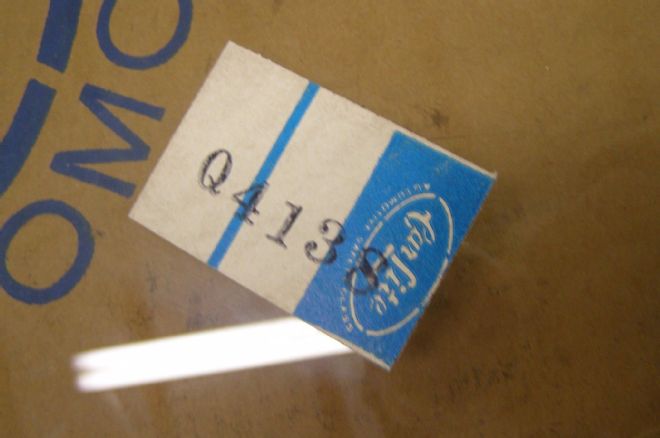 1969 original CarLite sticker on N.O.S. glass
1969 original CarLite sticker on N.O.S. glass
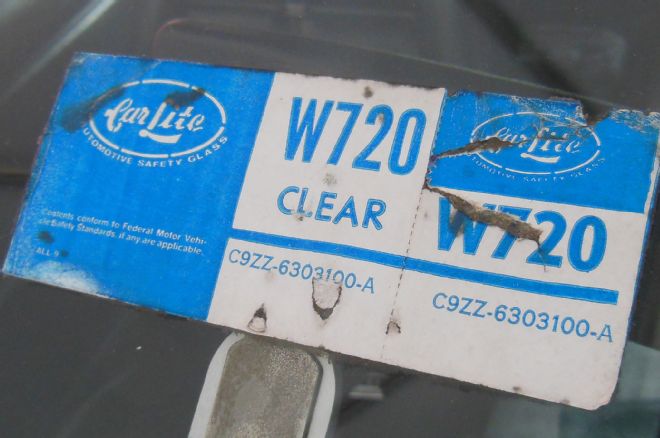 1969/1970 Mustang original CarLite sticker on N.O.S. glass
1969/1970 Mustang original CarLite sticker on N.O.S. glass
Special Thanks and Resources
Dave Walden of ECS in St. Louis Missouri was invaluable in his experience and research in reproduction glass, which is no surprise since he has been at this longer than any other supplier making the absolute most correct reproduction glass for our cars. Started in 1998, ECS was founded on one principle—to improve and perfect the restoration products on the market. Dave’s journey started with a 1970 Boss 302 where he found that tags and decals were not representative of the originals. After many hours of research and documentation ECS was started. Today, ECS produces the most correct reproduction glass and reproduction decals on the market not only for Ford, but also Chevrolet and Chrysler products.
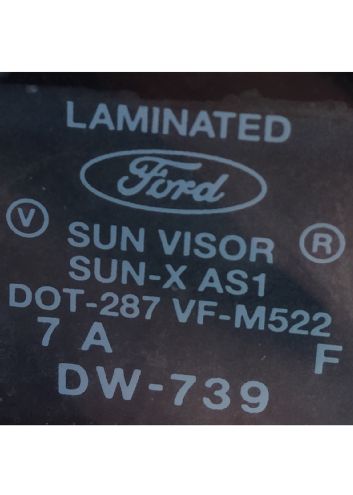 Later service piece, not marked like original etchings
Later service piece, not marked like original etchings
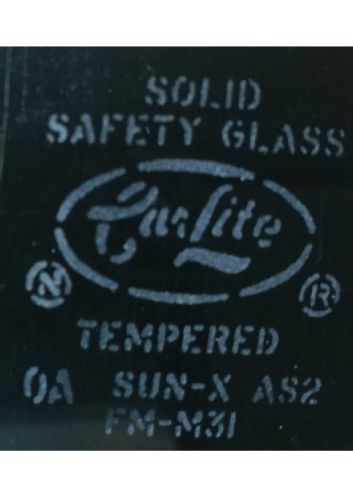 January 1970 original etching
January 1970 original etching
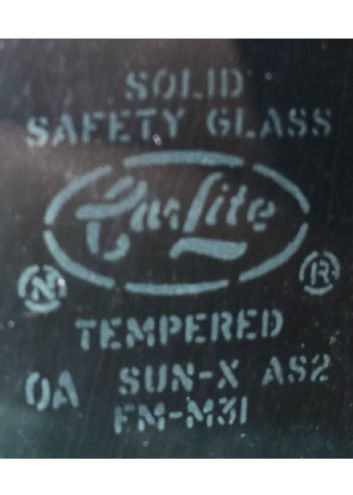 January 1970 reverse etching
January 1970 reverse etching
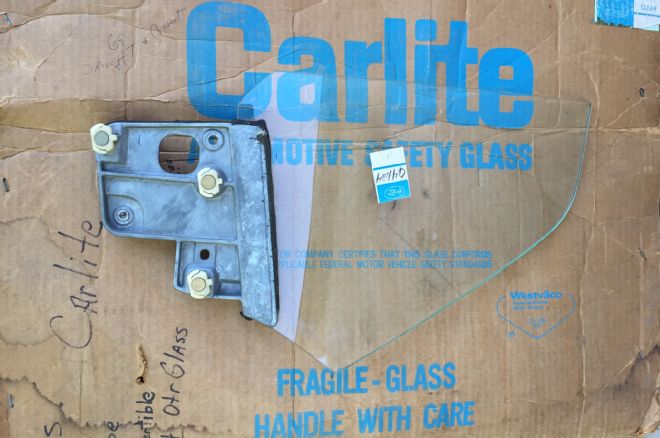 N.O.S. 1969 Mustang convertible side glass
N.O.S. 1969 Mustang convertible side glass
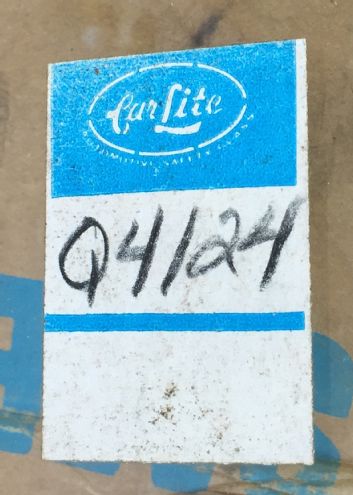 1969 original CarLite sticker on N.O.S. glass
1969 original CarLite sticker on N.O.S. glass
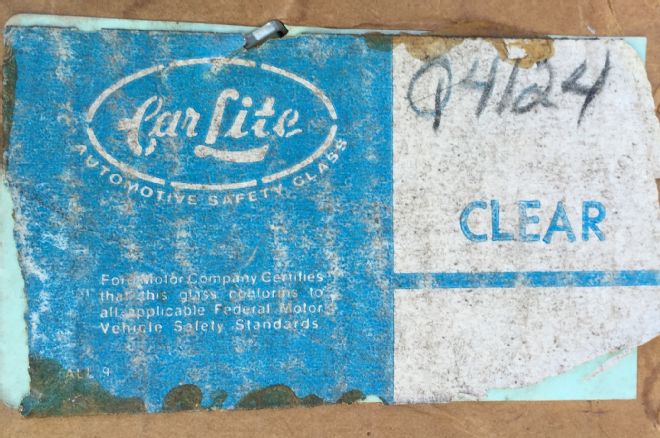 1969 original CarLite sticker on N.O.S. glass packaging
1969 original CarLite sticker on N.O.S. glass packaging
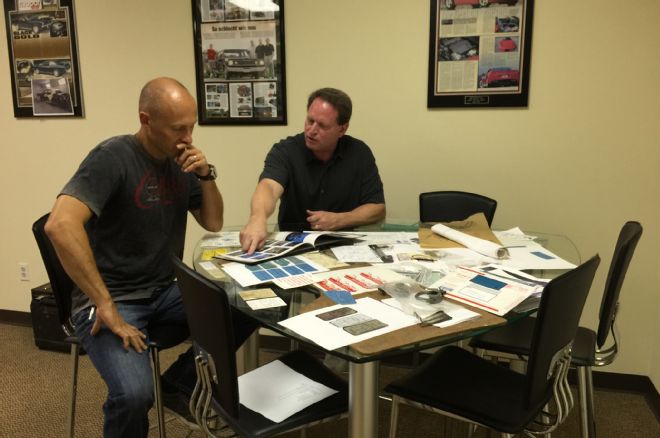 History lesson with Dave Walden
History lesson with Dave Walden
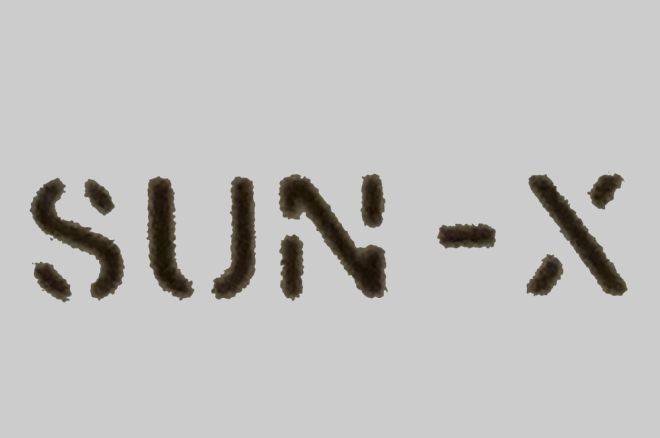 SUN-X logo etching
SUN-X logo etching
 Cross section of laminated glass showing plastic layer in the middle
Cross section of laminated glass showing plastic layer in the middle
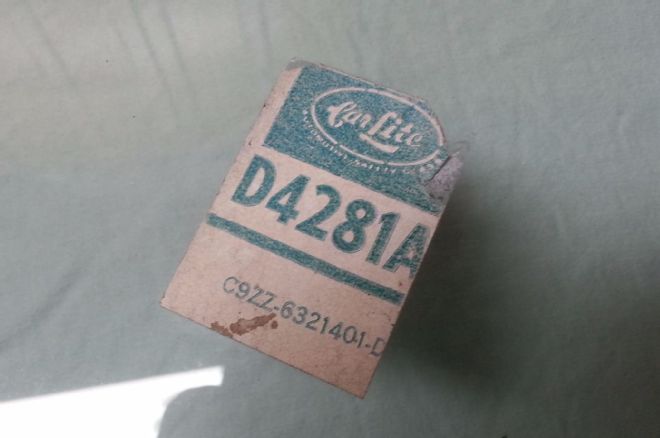 Original CarLite sticker on N.O.S. glass
Original CarLite sticker on N.O.S. glass